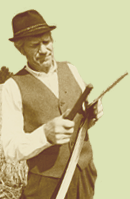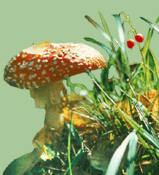The prosperous earth of South-East Estonia
Ain Põldveres cover story features the underground wealth of South-East Estonia: mineral resources. The best-known of the resources of the area is the snow-white glass-sand of Piusa, but remarkable resources are also found in Imaru and Kaku sites. Värska area is known for its salty mineral water and mud baths. In addition to that, the southern part of Setomaa possesses large quantities of Devonian limestone, which is used as a building material. Clay has also been an important mineral resource for ages.
Setomaa: land on the frontier
Heiki Valk tells us about the historical-cultural background of Setomaa, the land of Seto people. For centuries, it has been a land on the border of East and West, isolated from Livland by religion and administrative borders, and from Russia by language, mentality and traditions. Due to the peripheral location and long-time isolation, the uniqueness of the area still lingers in the air.
Piusa is the Mother River of Setomaa
Arvo Järvet gives a thorough overview of the Mother River of Setomaa The Piusa River. Detailed diagrams and maps help to understand the specifics of the river, that is known as the border river of Setomaa, as well as for its cold water and steep fall, numerous watermills and picturesque sandstone denudations.
Interesting plant species of Setomaa
Ülle Kukk describes the intriguing plant cover of Setomaa. The sandy pine forests and open heath areas form natural refugiums for several species of southern origin. Here one can see plants of forest steppe or steppe region rare or unknown elsewhere in Estonia.
Eesti Loodus enquires
Heiki Tamm tells about the activities of the Tartu Botanical garden which in July celebrates its 200th anniversary.
Rainer Kuuba introduces the project of Baltic Forest Mapping.
Language speaks about landscape
Mariko Faster takes the reader to the exciting world of seto linguistics and pours some light to the placenames of Setomaa by explaining the words in placenames. Seto people have their own words for houses and forests, hills and fields, swamps and bays. Many of the words are unknown in the Estonian language.
National park to Setomaa?
Mart Külvik writes about Setomaa having all the properties needed to set up a decent protected area.
Two protected areas in Piusa area
Roland Müür introduces two protected areas on the border of Võru and Põlva counties, both of which are called Piusa after the river. One of the protected areas has been set up to shelter the sandstone caves that are known as wintering grounds of bats; the other aims to safeguard the beautiful river landscapes with sandstone denudations.
The journey of Estonian Nature from wall to wall
Helen Alumäe and Toomas Jüriado, together with some friends, tried out the hiking trail of the Piusa primeval valley. On the 15 km they saw many wonders of the area: starting from rare butterflies, to the highest sandstone denudations of Estonia. The joyful descriptions and the detailed map of the trail form a great guide to any future hiker in this lovely forested valley area.
European rarities in Estonia
Mati Kose depicts a very endangered bird the European roller. The bird with attractive feathers was rather common still only some decades ago. Now this blue bird can very rarely be seen in Setomaa and a few other places in South Estonia.
Riinu Rannap writes about a frog common in South-East Estonia: the common spadefoot. Elsewhere in Estonia it is rare or missing. The sandy grounds of Setomaa are perfect for digging; the only problem is the absence of shallow and clean ponds for breeding.
The crack in sandstone becomes a cave.
Anne Kleesment gives a comprehensive description of sandstone caves of South Estonia. The included map and detailed table guide the readers to many interesting, but not much known caves.
Following the cross-trees
Marju Torp-Kõivupuu calls to pay attention to the cross-trees of South-East Estonia: those that bear the crosses of the people of the area. The ample article describes the origin of symbol of the cross, as well as the old traditions of Estonians and other nations to carve crosses in the trees when burying a person. The main aim of such cross was to keep the deceased in the other world.
Essay
Nikolai Laanetu writes about Setomaa as the cradle of Estonia..
Its pickle time
Urmas Kokassaar describes microbiological processes that accompany pickling. He points out the advantages of pickling and draws attention to possible mistakes.
Interview: Old knowledge and nature belief guard the nature of Setomaa
Helen Alumäe has interviewed Aare Hõrn, a seto activist.
Wondering in Petseremaa
Õie Sarvs journey to Petseremaa, the land belonging to Estonia in 1920s and 1930s, is written in juicy seto language. She invites us to Petseri, as well as to the small villages of the area.
Our sprat and herring on the way to European Union
Randel Kreitsberg views the possible fate of our fish resources in the waters of European Union.
Who are you, forest witch?
Marju Torp-Kõivupuu has heard about a mythological animal that lives in South-Estonian forests. On the one hand, it looks like a lizard, on the hand like a bird, or a squirrel. The most probable prototypes of the mystical animal are the sand lizard and the Eurasian wryneck.
Practical tips
Enno Väljal gives advice for nature photographers.
| 

![[IN ENGLISH]](images/gb.gif)





